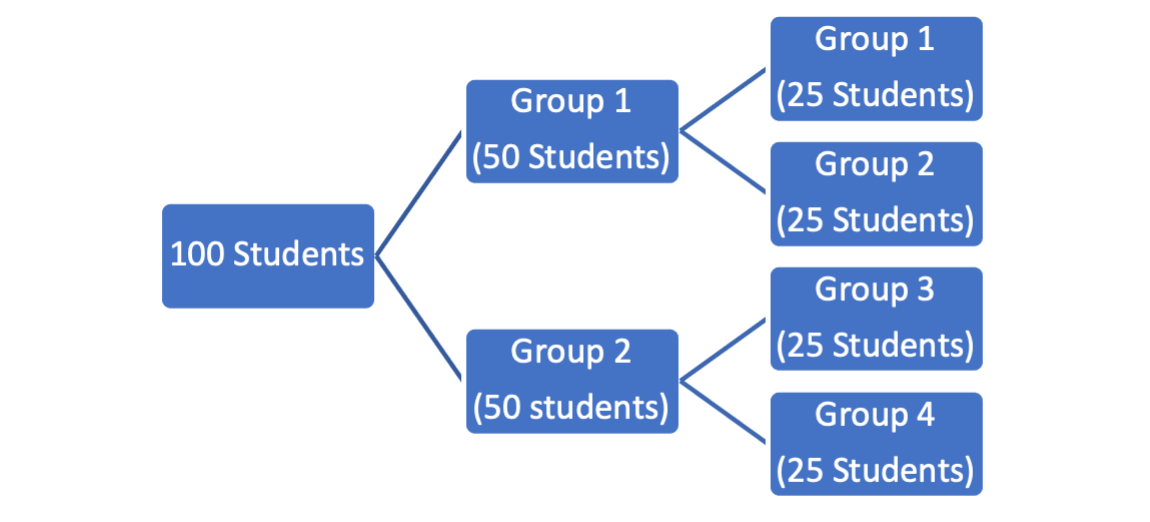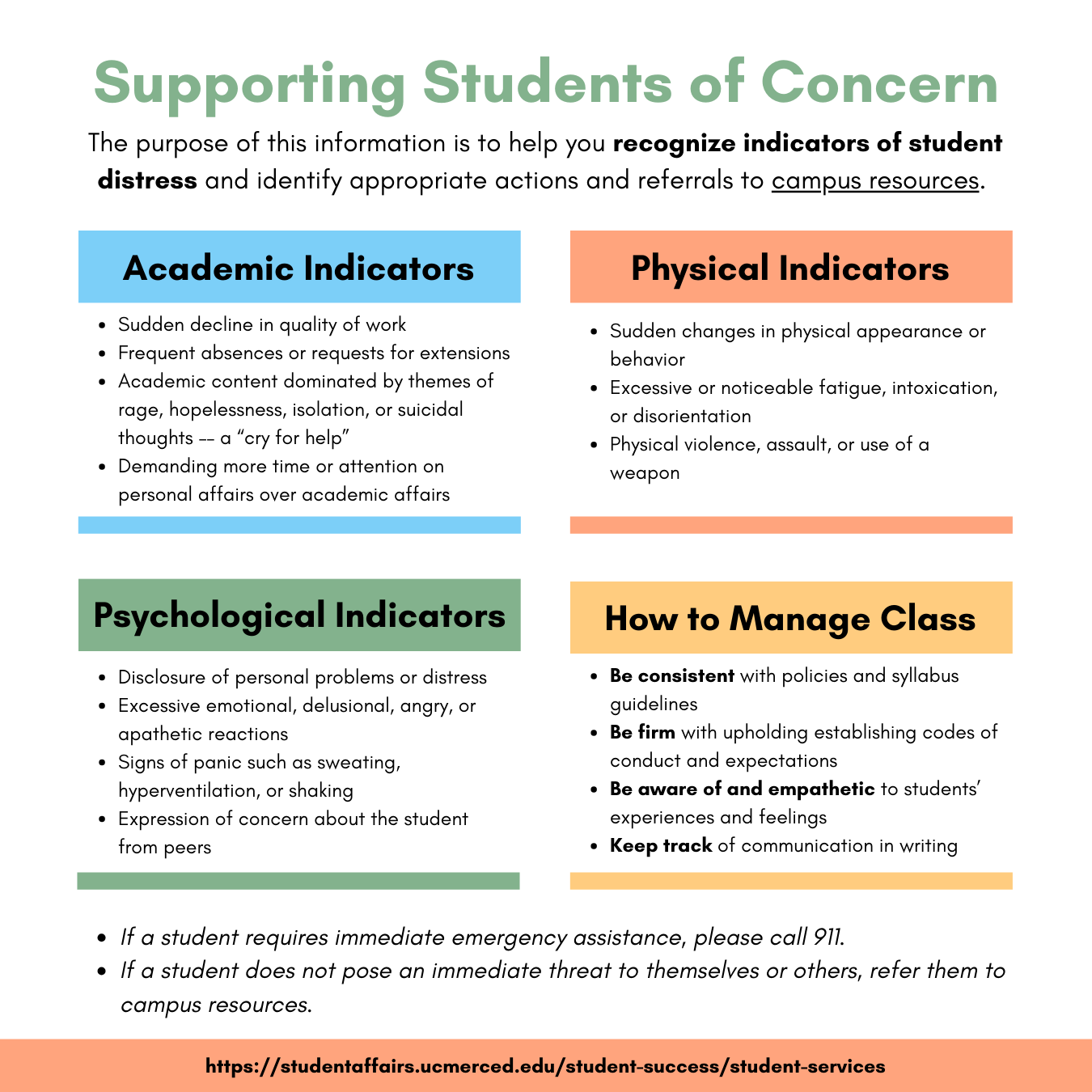Challenging and Supporting First-Years
Navigating Group Work and Large Classrooms
Participation and Resistance
Supporting Students of Concern
Challenging and Supporting First-Years
When our courses demand that first-year students move beyond memory—as they should—we need to provide structured activities to support them in uncharted territory.
-
Provide feedback early and often
-
Pose complex, real-life problems, questions, and facilitate discussions they can relate to
-
Be explicit and clarify the expectations and strategies of learning, engagement, and assessment
-
Address expectations at the beginning
-
Model the thinking you expect them to demonstrate
-
Give students a "Things you should know from high school" quiz to assess their background knowledge
-
-
Prepare for emotional reactions
-
Teach to a variety of learning styles
-
Minimize the need to memorize by setting instructional goals that target the development of core concepts and competencies such as:
-
critical thinking
-
problem-solving
-
knowledge application
-
creativity
-
communication and collaboration
-
leadership
-
global and cross-cultural awareness
-
intrapersonal skills (e.g., self-direction, motivation, and learning how to learn)
-
-
Resource and further information: Vanderbilt University: Teaching First Year Students
Navigating Group Work and Large Classrooms
When instructors are assigned to teaching large enrollment classes, several questions and concerns arise. How can instructors facilitate engagement and discussion among 100+ students? How will students receive meaningful feedback? What are some strategies to manage the increased grading load?
Strategy 1: Create Smaller Classes within a Large Class
Benefits: Creates community and may increase the sense of belonging; reduces grading load; if using zoom, this addresses the challenge of using breakout rooms with 100+ students.
 The large group of students can be divided into groups that serve as smaller communities that meet regularly. These same groups meet throughout the entire semester, working together on discussion board posts, offering peer editing and/or feedback on assignments, and even meeting for required office hours as a check-in (e.g., 20-minute intervals). Teams can be used for small group assignments. This provides students with an opportunity to get to know a smaller group of peers, thereby building a sense of community and ongoing support.
The large group of students can be divided into groups that serve as smaller communities that meet regularly. These same groups meet throughout the entire semester, working together on discussion board posts, offering peer editing and/or feedback on assignments, and even meeting for required office hours as a check-in (e.g., 20-minute intervals). Teams can be used for small group assignments. This provides students with an opportunity to get to know a smaller group of peers, thereby building a sense of community and ongoing support.
These smaller communities can be subdivided even further for group work, which will reduce the grading load and offer opportunities for students to clarify and elaborate on new concepts.
Establish a Climate Conducive for Group Work
- Reduce student anxiety (especially for marginalized students with hidden identities):
-
Assign groups rather than have students self-select group members
-
Create agreed-upon norms for expected student and instructor behaviors and communications
-
Establish group roles, one of which is a reporter
-
Be clear about course (and group) expectations; give clear directions
-
Don't assume students possess skills necessary for effective and respectful group work.
-
Large classes require rigid routines and regular schedules.
-
Develop a system for attendance (clickers, live quiz/survey in CatCourses during lecture, etc.)
-
Strategy 2: Effective Group Size and Dynamic
-
High-functioning groups are made up of 5 people.
-
Establish group rules/norms for respectful communication and interaction.
-
Assign roles to increase ownership and participation (e.g., group/task manager, equity officer [assures all members contribute], reporter, note-taker, time-keeper, devil's advocate, etc.).
-
Establish the purpose/value of group discussions/the discussion board.
-
Ensure prompts are interesting and meaningful; connected to the course learning outcomes.
-
Establish the expectation for supporting opinions/perspectives and advancing the conversation in each post.
-
Assign participation points rather than grading the content of each entry or consider grading the overall quality of the group discussion.
Strategy 3: Leverage the People –– Peer Review and TA Support
-
Use rubrics! It saves time and helps mediate feedback.
-
In peer review, provide sample papers/discussion posts and have students practice using the rubric. Doing so can greatly enhance assessment literacy levels and student performance on similar tasks (Smith, et al., 2013).
-
Though the Canvas peer review grade does not feed into the grade book, you can create a low-stakes survey to populate a grade and help you identify that a peer review was received by each student, highlighting intervention opportunities.
-
Host grading meetings for TAs where the group can discuss exemplars, mediocre, and poor papers and have each TA grade and comment on each one. This will normalize TA grading.
-
Divide grading sections on one assignment to reduce TA bias.
-
Have a system in place for managing complaints (communicating expectations, outcomes, and rubrics with students will reduce this time).
-
Ask for written complaints to deter visceral responses with 24 hours.
Participation and Resistance
-
Be explicit about your expectations for participation
-
Incentivize participation
-
Syllabus Language: Participation in Class Discussion (example language)
-
Class participation is a very important part of the learning process in this course. Although not explicitly graded, you will be evaluated on the QUALITY of your contributions and insights. Quality comments possess one or more of the following properties
-
Offer a different and unique, but relevant perspective.
-
Contribute to moving the discussion and analysis forward.
-
Transcend the “I feel” syndrome. That is, it includes some evidence, argumentation, or recognition of inherent tradeoffs. In other words, the comment demonstrates some reflective thinking.
-
Strategies to mitigate Resistance to Active Learning (Tharayil et al., 2018)
-
Explanation strategies
-
Explain the purpose & value of assignments
-
Provide clear directions and expectations
-
-
Facilitation strategies
-
Assume an encouraging demeanor
-
Approach non-participants privately
-
Grade on participation
-
Monitor breakout rooms
-
Invite questions
-
Develop a routine
-
Design activities for participation
-
Use incremental steps
-
References
-
Tharayil, S., Borrego, M., Prince, M. et al. Strategies to mitigate student resistance to active learning. IJ STEM Ed 5, 7 (2018). https://doi.org/10.1186/s40594-018-0102-y




